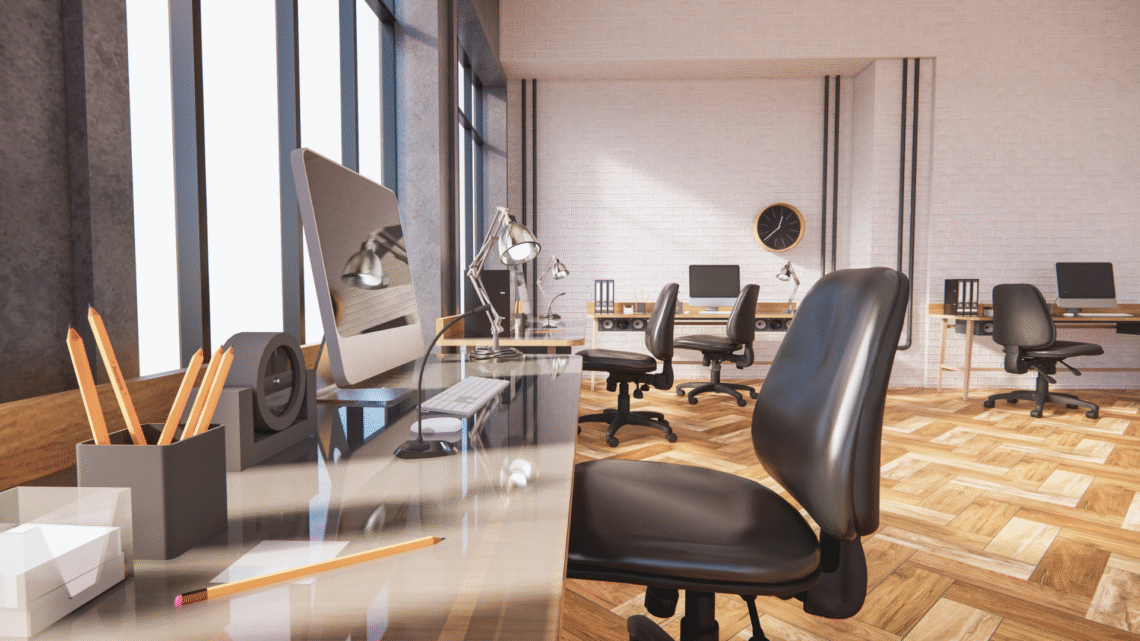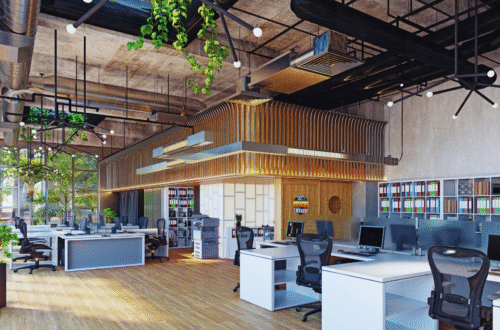
The Best Ergonomic Furniture for a Comfortable Workspace
Creating a comfortable workspace is essential for productivity and overall well-being. Investing in the best ergonomic furniture can significantly enhance comfort and reduce strain during long hours of work. From adjustable desks to supportive chairs, the right office furniture makes a noticeable difference in how individuals feel and perform throughout the day.
In a home office or traditional work environment, ergonomics plays a crucial role. Selecting items that promote proper posture and alignment not only boosts efficiency but also contributes to long-term health. The variety of ergonomic solutions available today ensures that everyone can find furniture suited to their needs and preferences.
Choosing ergonomic furniture is a proactive step towards creating a more pleasant and effective workspace. This guide will explore top options to consider that can transform any office into an oasis of comfort and productivity.
Key Features of Ergonomic Furniture
Ergonomic furniture is designed to enhance comfort and functionality in the workspace. Essential features include lumbar support, adjustability, and materials that promote durability and breathability.
Lumbar Support and Backrest
Effective lumbar support is crucial for maintaining a healthy posture. A chair with adjustable lumbar support ensures that it can be tailored to the natural curve of the spine, reducing strain on the lower back.
The backrest should offer adequate height and curvature. A well-designed backrest not only supports the lumbar region but can also include a backrest tilt feature. This allows users to recline comfortably, aiding relaxation during long working hours.
Adjustability and Personalisation
Adjustability is a hallmark of ergonomic furniture. Chairs with adjustable armrests allow users to position their arms comfortably, reducing tension in the shoulders. Additionally, adjustable seat height accommodates different body types, promoting proper alignment with desk surfaces.
Seat depth is another important feature. It enables users to find the ideal distance from the backrest to their knees, helping to maintain circulation while seated. Many ergonomic chairs offer a range of adjustable features to cater to individual preferences and needs.
Materials and Durability
High-quality materials greatly influence the comfort and lifespan of ergonomic furniture. Breathable mesh or breathable fabric upholstery is preferred for its ability to promote airflow, which helps in regulating temperature during extended use.
Durability factors into the overall functionality of ergonomic furniture. Choosing materials that withstand daily wear can enhance the value of an investment in office ergonomics. Therefore, selecting items made from robust components ensures reliable and long-lasting performance.
Best Ergonomic Chairs and Seating Options
Choosing the right ergonomic chair is essential for comfort and productivity in a workspace. Several types of seating options cater to different needs, including office chairs, task chairs, and collaborative furniture.
Top-Rated Ergonomic Office Chairs
High-quality ergonomic office chairs are designed to support proper posture. Popular models from brands like Herman Miller and Knoll offer various features. Adjustable seat height, backrest tilt, and lumbar support are crucial for comfort.
Key features to consider include:
- Adjustable armrests: Enable custom positioning for forearm support.
- Seat depth adjustment: Accommodates different leg lengths.
- Breathable materials: Improve comfort during long sessions.
Some top-rated models include the Herman Miller Aeron and the Knoll ReGeneration chair. Both provide excellent back support and modern design.
Task Chairs, Executive Chairs, and Swivel Chairs
Task chairs are compact and designed for flexibility, making them ideal for quick movements. They generally feature lightweight designs and more limited adjustments compared to office chairs. Swivel chairs, with their ability to rotate, enhance mobility in the workspace.
Executive chairs are larger, providing a higher back and enhanced support for long hours. They often feature additional cushioning and a more luxurious look suitable for formal settings. Key aspects to consider include:
- Durability of materials
- Adjustability for personalised comfort
- Aesthetics that fit the office environment
Selecting the right chair type largely depends on the intended use and office style.
Stools and Collaborative Furniture
Standing desks are increasingly popular, and accompanying stools can provide a flexible seating option. These stools are often height-adjustable to accommodate different working surfaces.
Collaborative furniture, including seating that encourages interaction, supports teamwork. These pieces are designed for ease of movement and comfort during prolonged discussions.
Key features of stools and collaborative pieces include:
- Lightweight designs for easy relocation
- Minimalist aesthetics to complement modern spaces
- Varied height options to suit different users
Choosing the right combination of stools and collaborative furniture fosters a dynamic and comfortable work environment.
Ergonomic Desks and Workspace Accessories
Creating a comfortable workspace requires careful selection of an ergonomic desk and appropriate accessories. These elements play a crucial role in enhancing productivity and overall well-being.
Choosing the Right Ergonomic Desk
An ergonomic desk significantly affects how individuals experience their workspace. A good ergonomic desk should offer adjustable height settings to enable a sit-stand configuration. This flexibility allows users to alternate between sitting and standing, which can reduce fatigue.
Look for desks with ample surface area to accommodate monitors, keyboards, and other essentials. Storage options such as drawers or shelves can help maintain a tidy environment. Additionally, a minimalist design may contribute to the aesthetics of the workspace while providing functional benefits.
Essential Accessories for Comfort
Accessories can elevate the comfort level of an ergonomic workspace. A quality keyboard and mouse are vital; they should promote a natural wrist position to minimise strain. A supportive chair is also important; features like lumbar support and adjustable armrests can provide vital back support.
Lighting plays a significant role in comfort as well. Task lighting that reduces glare on screens can enhance focus. Accessories like smooth-rolling casters enable easy movement of furniture, adapting the layout as needed. Each element should contribute to a harmonious environment that promotes engagement and productivity.
Achieving Versatility and Visual Appeal
Incorporating versatility and style in office furniture can enhance both functionality and aesthetics. Choose desks with interchangeable components that allow for a customised layout. This adaptability ensures the workspace meets changing needs.
Consider decor that complements the ergonomic furniture. Soft colours and natural materials can create a calming atmosphere, while sleek designs can enhance the modern appeal. Accessorising with plants or artwork adds personality, maintaining a balance between a professional environment and personal expression.
Creating a Comfortable and Productive Workspace
Establishing an effective workspace involves careful consideration of organisation, design, and overall comfort. These factors combine to maximise productivity while ensuring a pleasant environment for work.
Workstation Arrangement and Organisation
A well-planned workstation directly influences productivity. Start with a desk that provides sufficient space for essential items.
Key considerations include:
- Monitor height: Ensure the monitor is at eye level to reduce neck strain.
- Keyboard and mouse placement: These should be within easy reach while keeping the wrists relaxed.
Incorporating storage solutions enhances organisation. Use shelves and drawers to keep the desk clutter-free.
Storage options can include:
- Drawer units: For easy access to documents.
- Wall-mounted shelves: To free up desk space while keeping important items visible.
Balancing Comfort and Modern Design
Incorporating ergonomic furniture can provide maximum comfort without sacrificing aesthetics. Chairs should have adjustable features and breathable fabrics for ventilation during long work hours.
Important aspects to consider:
- Adjustable chairs: Support back health and allow for personalised comfort settings.
- Desk options: Height-adjustable desks promote movement, which is beneficial for productivity.
Design choices should reflect a modern aesthetic. Select furniture that complements the home office while enhancing the mood of the workspace. Soft colours and sleek lines can create a calming atmosphere.
Customer Service and Purchase Considerations
When purchasing ergonomic furniture, it is essential to consider customer support and warranty options. Good customer service can greatly enhance the buying experience and provide assurance.
Key aspects to evaluate:
- Warranty periods: Opt for products with extensive warranties to safeguard investment.
- Return policies: Ensure flexibility in case the furniture does not meet expectations.
Researching customer reviews can provide insight into product satisfaction. Consider retailers known for their attentive support and reliable delivery.





